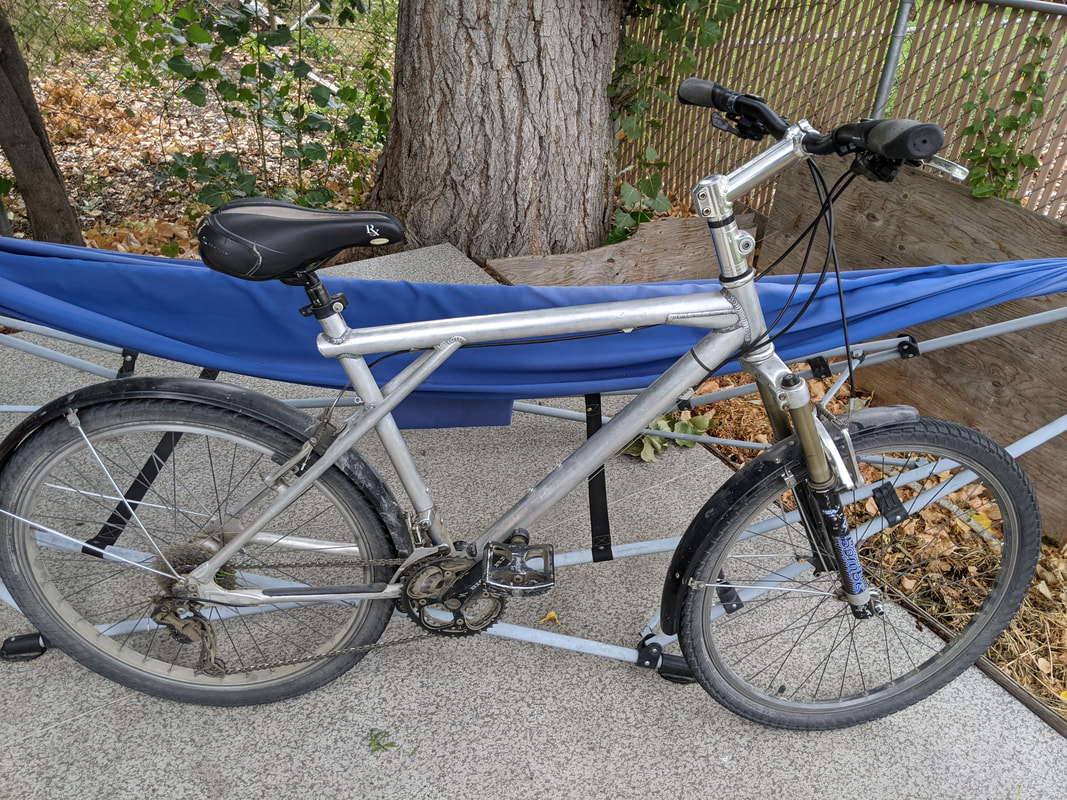The number of posts from members asking if their new prize was a genuine American made Zaskar eventually resulted in every frame - even those that were obvisouly not GTs - posted with the question; "Is it a Zaskar?"
So, is this a Zaskar?
But seriously - how large must this tub have been? Did each frame go one at a time? How long did this take? What kind of hellacious racket did this make??
I swear that we are getting screwed on modern bikes when it comes to paint and finish.
In 1993, as part of the slow and steady abandonment of steel by the industry, GT's Avalanche became an aluminium frame, made of 7005 series metal in Taiwan. It was very similar to the Zaskar, and once the decals were removed, it was difficult to tell them apart.
#1. Two bolt derailleur hanger. I came up with this one myself - I haven't seen anyone mention this. Every Zaskar I've seen - at least up to 1997 when production switched to Taiwan - has this very large, two bolt derailleur hanger. But hey - so does the Avalanche in the picture above, so, maybe I have an Avalanche?
#2. Serial number is all numbers. Non-Zaskars have letters at the beginning of the serial number identifying which company built the frame. No letters in mine, therefore it was made at the GT factory in Santa Ana, CA in October of 1993 for the 1994 model year. However.... People say this isn't always the case...
#3. Cable guides. This is where it gets weird. Almost all of the Zaskars that I can find pics of the cable guides, the one in front of the seat tube is welded. Mine is riveted on - just like the Avalanche at the top. However, in the very nice purple Zaskar LE pictured above, it is riveted on.
Looking at that picture of the Avalanche, it is nearly identical to my bike. Except for one thing....
One more weird thing - I have seen both Zaskars and Avalanches with this hollowed-out non-drive side dropout. This was not mentioned in the two threads I looked at discussing Zaskar identification. I guess this is a thing they did for the 1995 models, though, the guy that posted the pics of this bike says it's a '94.
#4. Flat cap on the end of the top tube. Check out the '93 Avalanche in the middle picture - the end of the top tube is curved. Everyone agrees, the Zaskar had a flat end cap on the top tube. This is one of the two most important markers from what I've seen.
#5. The 1909 stamp on the dropout. At first, I didn't see this, which left things a little open, as this is the second 'no doubt' diagnostic. The Zaskar of 1994 was made from 1909 almuminium.
One moment. I'm being told that I'm reading it upside down, and that's actually 6061. All Zaskars made in California were made from 6061 aluminium.
So, I am certain I have a Zaskar here - it hits all the important points. I totally get how this became a thing though, it's almost hard to believe how much contradicting info you can find on the Internet on these bikes. On top of what I've gone through here, a lot of them don't even have serial numbers, which makes you wonder what was going on in that factory.
I think I'll be hanging on to this one for a bit - stay tuned.







 RSS Feed
RSS Feed
